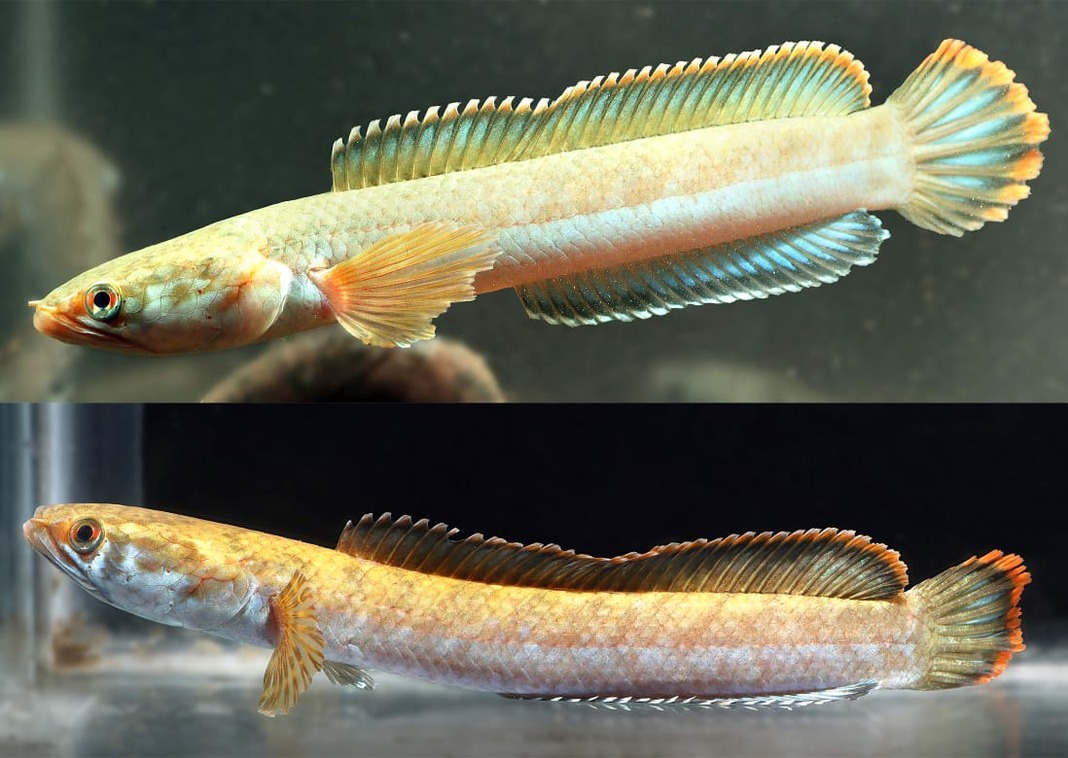Channa nachi was found in a shallow, slow-flowing stream that feeds into the Simsang river system near Chokpot village
Shillong, Mar 28: When Farham Sangma, a fish hobbyist from Meghalaya, collected a peculiar-looking fish from a remote stream in South Garo Hills four years ago, he had no idea that he was holding a species unknown to science. Now, the fish has been officially recognized as Channa nachi, a new species of snakehead, highlighting the incredible biodiversity of Meghalaya’s freshwater ecosystems.
The discovery was made by a team of scientists comprising J Praveenraj, N Moulitharan, A Pavan Kumar, R S Naveen, T Thackeray, R Yumnam and S D Gurumayum who have now described the species in their latest study. Channa nachi was found in a shallow, slow-flowing stream that feeds into the Simsang river system near Chokpot village, a waterbody with a substrate of sand, leaf litter, and pebbles—an ideal habitat for lesser-known aquatic species.
The stream is also home to other freshwater fish species such as Schistura reticulofasciata, Dario kajal, Pseudolaguvia sp., and Barilius bendelisis, but Channa nachi stands out for its striking appearance and distinct characteristics.
For Sangma, discovering that the fish he collected was a new species was beyond his wildest dreams.
“I am a nature lover and often venture into the wild to explore its fascinating world,” he said. “In 2020, I visited Chokpot village and found this fish. Something about it seemed different, so I immediately shared its pictures with Dr. Praveenraj for scientific research.”
It was this curiosity that led to the identification of Channa nachi, a species that belongs to the genus Channa, commonly known as snakeheads—elongated, predatory fish known for their ability to survive in low-oxygen environments.
“This is a medium-sized snakehead species with an attractive bicolor body—the anterior being creamish-yellow to pale-brown and the posterior a rich blue,” said Dr. Praveenraj J. “Farham Sangma first brought it to my attention, so I am delighted to propose the common name ‘Farham’s snakehead’ in his honor.”
Sangma, overwhelmed by the recognition, said, “I am on cloud nine knowing that the fish’s common name is after me!”
The scientific name Channa nachi is also deeply connected to Meghalaya’s indigenous culture. The name “nachi” comes from the Garo language, where it is used as a vernacular term for the fish. This choice reflects the deep relationship between the Garo people and their aquatic biodiversity, reinforcing the significance of local knowledge in scientific discoveries.

What Makes Channa nachi Unique?
The researchers highlighted several key features that distinguish Channa nachi from other snakeheads in the Eastern Himalayas. It has a slender body with a unique creamish-yellow to greyish-blue coloration, pale-blue marbling on the ventral area, 10–12 pale brown saddles on the dorsal half, no spots or blotches, and no transverse markings on the caudal fin.
These striking features make Channa nachi an attractive species for the international ornamental fish trade, where vibrant snakeheads from Northeast India have been gaining popularity.
The study notes that in recent years, ornamental fish collectors from Northeast India have played a key role in discovering colorful snakehead species, including Channa andrao, Channa bipuli, Channa aristonei, and now Channa nachi. Many of these species are now sought-after in the international aquarium trade, helping to bring attention to the region’s rich biodiversity.
“The recognition of these discoveries offers a level of gratification to hobbyists who frequently provide important biological data and photographs to researchers,” the study states.
As more snakehead species are being discovered in the mountain streams of the Eastern Himalayas, scientists emphasize the need for standardized species descriptions using both morphological and molecular data, ensuring that future identifications are scientifically robust and well-documented.




